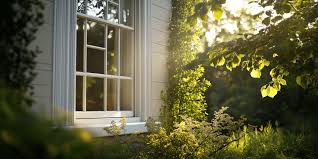
Ovolo Moulding: A Timeless Decorative Feature for Your Home
When it comes to adding a touch of charm and elegance to a home, few decorative features can stand the test of time as well as ovolo moulding. As trends in interior design ebb and flow, ovolo moulding persists as a hallmark of sophistication, linking contemporary aesthetics to historical roots. But what makes this architectural detail so enduring? And why is it trending among modern homeowners?
This article dives into the timeless appeal of ovolo moulding, exploring why it’s a favorite choice for those looking to elevate their home’s style without compromising functionality or contemporary design values.
The Evolution of Ovolo Moulding
Ovolo moulding first emerged during the classical periods of architecture, often prominently featured in ancient Greek and Roman designs. Characterized by its convex, semi-circular profile, the design echoes the geometric precision and artful simplicity that defines classical artistry. The name “ovolo” is derived from the Latin word “ovum,” meaning egg, and reflects its rounded, egg-like shape.
Revived during the Renaissance and its subsequent architectural movements, ovolo moulding became synonymous with high-end craftsmanship. From stately homes to public buildings, it added depth and character to both interiors and exteriors. Today, this heritage detail has seamlessly transitioned into the modern home, adored for its graceful appearance and ability to complement diverse aesthetics.
Why Ovolo Moulding Enjoys Enduring Popularity
Statistics on home design trends indicate a rising interest in architectural details that merge simplicity with classic elegance. For instance, Google Trends shows a steady increase in searches for “ovolo moulding” over the past five years, particularly among homeowners aged 30-45—a demographic that values blending modernity with heritage.
Interior designers and architects often cite ovolo moulding as the “go-to” feature for homes seeking subtle sophistication. But why has this centuries-old technique seen a resurgence in popularity?
- Versatile Design Appeal
Ovolo moulding’s understated curves make it an excellent fit for a variety of home styles, whether modern minimalist or rustic chic. Unlike more intricate moulding profiles, ovolo moulding doesn’t steal the spotlight but rather complements the existing design features of a room. Its smooth, rounded edge softens harsh lines and creates a harmonious flow between walls, ceilings, and furniture.
- Enhanced Visual Depth
Architectural depth is a key focus in many trending home designs, and ovolo moulding fits this trend perfectly. By highlighting transitions between walls and ceilings or between cabinetry and countertops, it adds a sense of dimension and detail often missing in plain, unadorned spaces.
The texture brought by ovolo moulding can make stark spaces feel warmer and more inviting, a quality increasingly valued in the design of home offices, living rooms, and dining areas.
- Durability Factors
While its aesthetic appeal is evident, ovolo moulding serves a practical purpose as well. Its smoothly-rounded edges are less prone to chipping compared to sharp-edged mouldings, making it an excellent long-term choice for high-traffic areas such as hallways or staircases. This durability aligns with current consumer preferences for low-maintenance, high-value solutions in home design.
- Boosts Resale Value
For those considering the financial aspect of their renovations, ovolo moulding can increase the perceived value of a property. According to a report by the National Association of Realtors, homes with thoughtfully integrated architectural details—like moulding—are more likely to attract buyers and often achieve higher sale prices.
Trending Applications of Ovolo Moulding in Modern Homes
Ovolo moulding has adapted beautifully to contemporary trends while maintaining its timeless charm. Here’s how homeowners and designers are using it today:
Around Windows and Doors
Ovolo moulding is frequently used as casing around windows and doors. The rounded profile softens the hard edges of frames, providing a finished and polished look that enhances the overall architectural aesthetic.
Ceiling Transitions
Crown moulding remains one of the most popular options for ceiling-to-wall transitions, and ovolo profiles are increasingly chosen for this role. Their subtle curve adds softness, connecting the ceiling and walls in a visually pleasing manner while avoiding an overly ornate appearance.
Custom Cabinetry
Kitchen design trends reveal a surge in bespoke cabinetry featuring ovolo moulding accents. Whether it’s adorning shaker-style cupboards or highlighting drawer edges, this detail has become synonymous with bespoke craftsmanship.
Baseboards with a Twist
Rather than opting for sharp-lined baseboards, designers are turning to ovolo moulding for the bottom of walls. Its softer curves protect against scuff marks while enhancing the room’s overall aesthetic.
A Sustainable Choice for Home Design
Homeowners today are more conscious of eco-friendly choices in their renovations, and ovolo moulding aligns with this philosophy. Many manufacturers offer moulding made from sustainably sourced timber or even recycled materials.
Engineered wood mouldings with ovolo profiles are rising in popularity due to their reduced environmental impact while maintaining the classic aesthetic appeal.
Elevate Your Space with Ovolo Moulding
The data doesn’t lie—ovolo moulding continues to capture the hearts of design enthusiasts and homeowners for a reason. Its timeless profile suits evolving trends, making it one of the most versatile elements to introduce into a home. Whether you’re renovating a single room or building a home from scratch, consider ovolo moulding for that balance of elegance and functionality that transcends generations.
